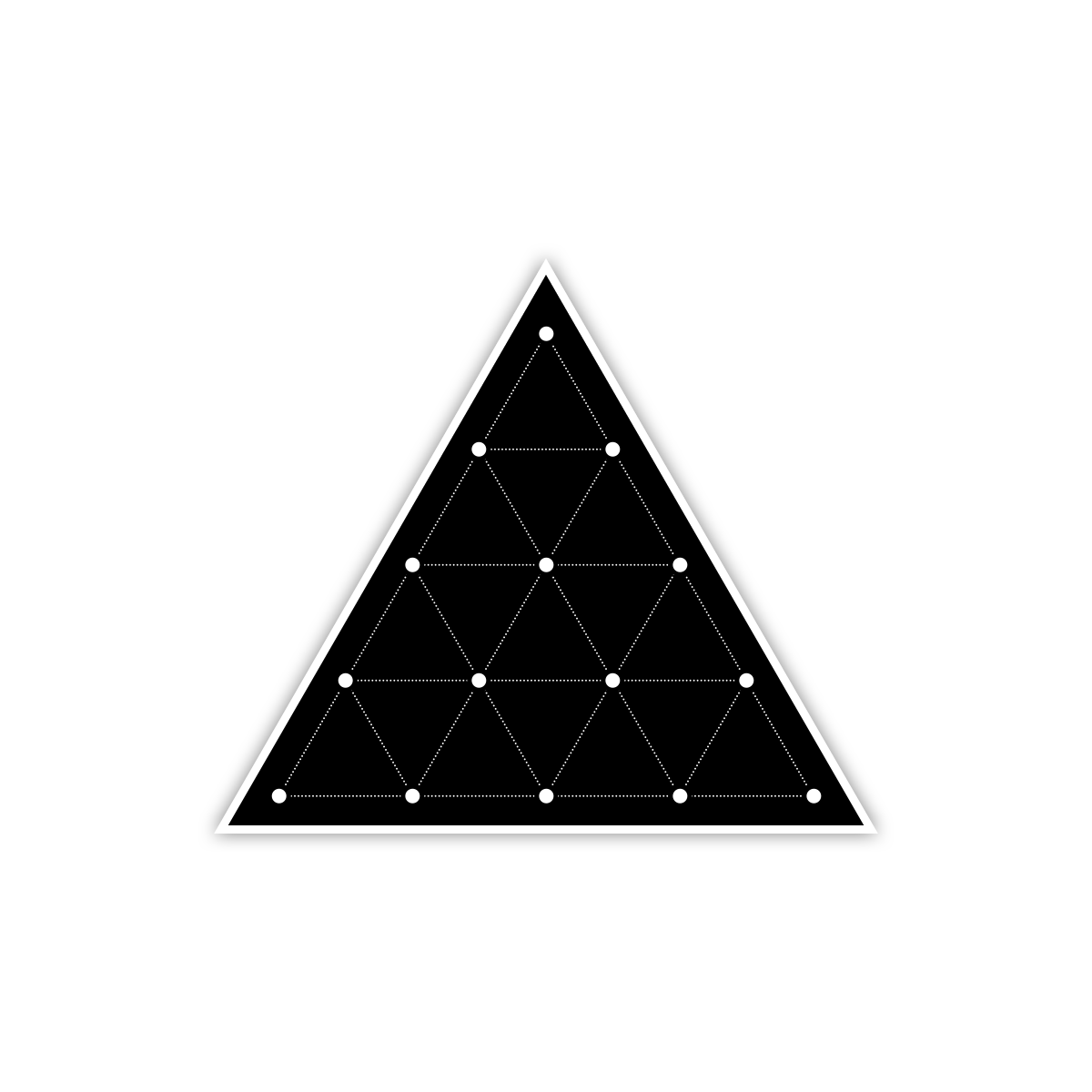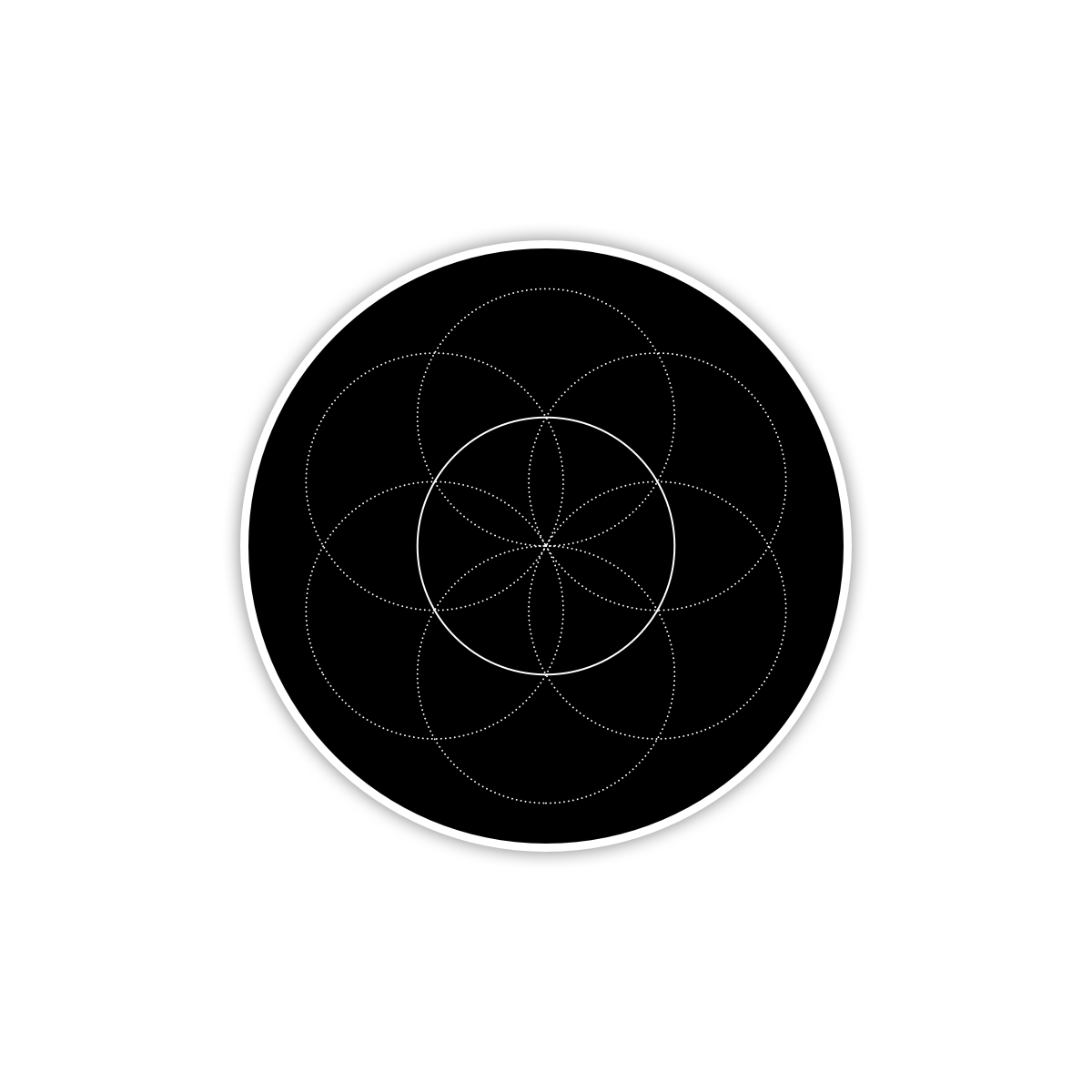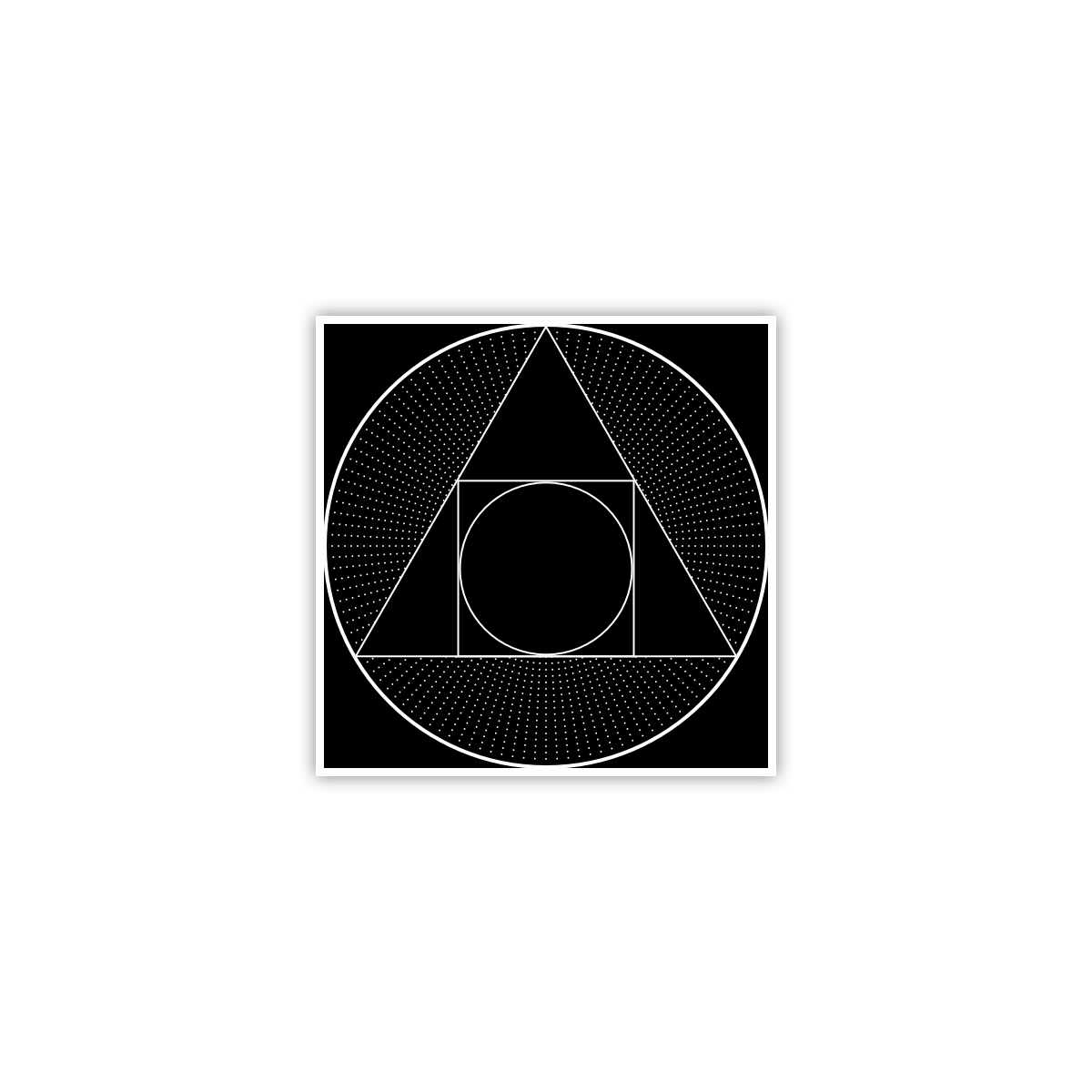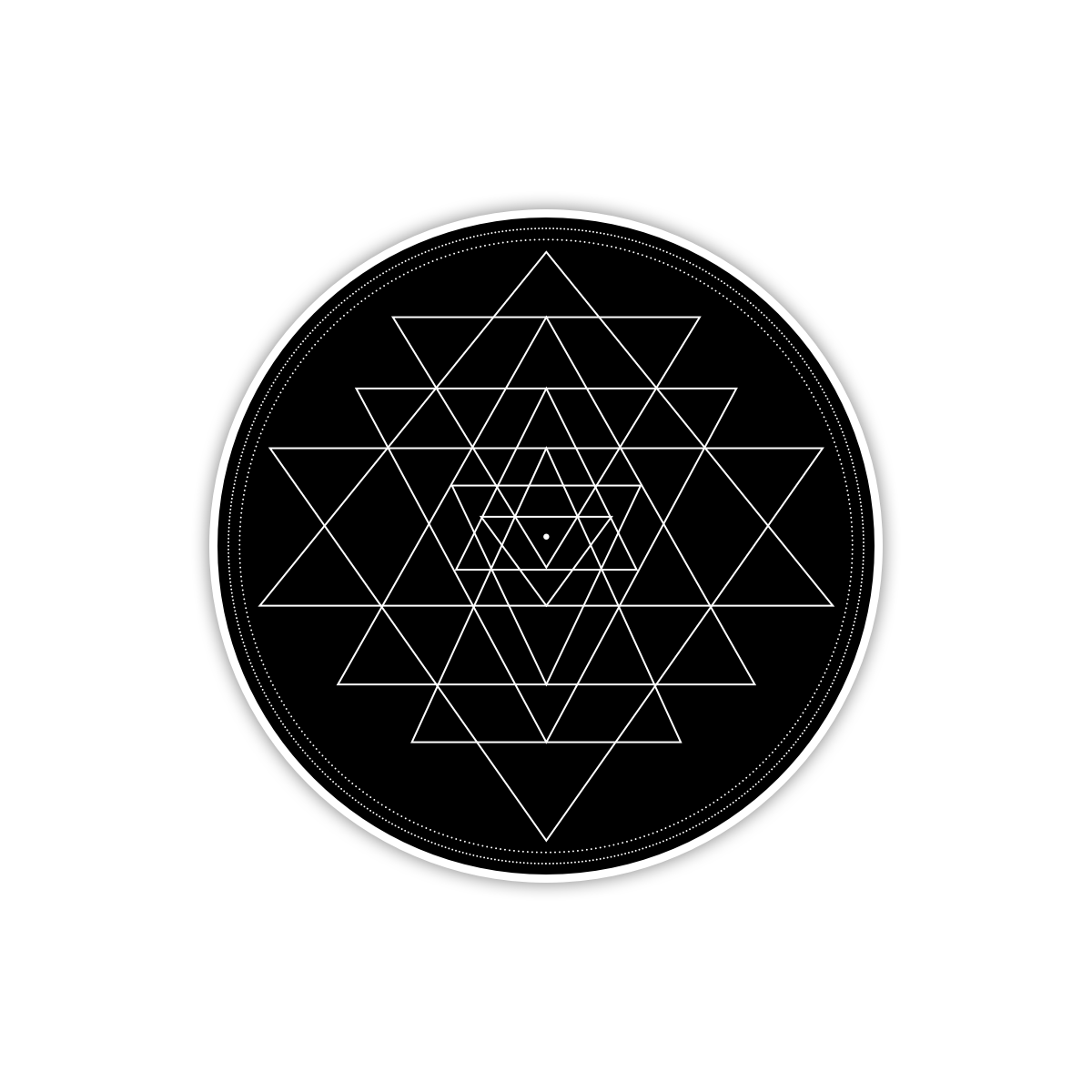Sacred Geometries
Collection of designs exploring different mathematical principles and conceptual diagrams derived from rules which help you visualize and internalize higher-dimensional aspects of reality into your daily life. These shapes and patterns have spiritual significance, can be found in various cultures around the world and are often used in art and architecture as a way to connect with the divine.

Golden Rectangle
F(n) = F(n-1) + F(n-2) : 0, 1, 1, 2, 3, 5, 8, 13, 21, 34, 55, 89, 144, … Series of numbers in which each number is the sum of the two preceding ones, usually starting with 0 and 1, named after mathematician Leonardo Fibonacci, who introduced it to the Western world in his 1202 manuscript "Liber Abaci." The Fibonacci sequence has many interesting properties and appears in various areas of mathematics and science. It is also closely related to the golden ratio, which is a mathematical ratio that is believed to be aesthetically pleasing and is found in many areas of art and design.

Tetractys
Triangular figure made up of ten points arranged in four rows. It is an ancient symbol that has been used in various spiritual and philosophical traditions, including in Pythagorean philosophy. In Pythagorean thought, the Tetractys was believed to symbolize the fundamental principles of the universe and was seen as a way to understand the mysteries of the divine. The Tetractys is often associated with the number 10, which was considered a sacred number in Pythagorean philosophy. The Tetractys is also closely related to the concept of the "decad," which refers to the sum of the first four numbers in the Fibonacci sequence (1+1+2+3=7). In Pythagorean thought, the decad was seen as a symbol of the unity and harmony of the universe. The Tetractys is sometimes used as a tool for meditation or as a focus for spiritual practices. It is also used in art, design, and architecture as a way to connect with the divine and to bring a sense of balance and harmony to a space.

Gnomon
Aristotle observed that some things suffer no change other than magnitude when they grow. He was describing the principle the Greeks referred to as ‘gnomonic growth’. Originally a term for a carpenter’s tool, a gnomon is defined as any figure, which, when added to another figure, leaves the resultant figure similar to the original. Contemplation of the gnomon leads to an understanding of one of nature’s most common principles, growth by accretion.

Magic Square
Grid of numbers in which the sum of each row, column, and diagonal is the same. Magic squares have a long history and have been found in various cultures around the world. They were often believed to have magical properties and were used as talismans or charms to bring good luck or to protect against evil. To create a magic square, you start by placing the number 1 in the center of the top row. Then, you fill in the rest of the grid with the consecutive integers, moving to the right and wrapping around to the next row when you reach the end of a row. The goal is to create a grid in which the sum of each row, column, and diagonal is the same.

Seed of Life
Geometric pattern that is made up of seven overlapping circles, forming a pattern of circles and dots. It is believed to be a symbol of creation and is further associated with the concept of the Fruit of Life, Flower of Life and the Tree of Life. The Seed of Life is thought to contain the patterns of all creation, and it is believed to hold a sacred and powerful energy. The Seed of Life is sometimes used as a tool for meditation or as a focus for spiritual practices. It is also used in art, design, and architecture as a way to connect with the divine and to bring a sense of balance and harmony to a space. Some people believe that the Seed of Life has the power to bring positive energy and healing to those who contemplate it.

Squared Circle
Geometric shape that consists of a circle inscribed within a square. The term "squared circle" is often used to describe a situation that is seemingly paradoxical or impossible to reconcile, such as trying to square a circle (which is a mathematical problem that has no solution). In art and design, the squared circle is sometimes used as a symbol of unity and balance, as it combines the circular shape (which is associated with unity and completeness) with the square shape (which is associated with stability and structure). The squared circle is also sometimes used as a symbol of the search for truth and understanding, as it represents the idea of trying to reconcile opposing or incompatible ideas. It is also used as a metaphor for trying to bring together seemingly incompatible elements or to achieve a resolution to a seemingly intractable problem.

Sri Yantra
Complex geometric pattern made up of intersecting lines and triangles. It is used in Hinduism as a tool for meditation and is believed to bring about spiritual growth and enlightenment. The Sri Yantra is often depicted as a symmetrical pattern of nine interlocking triangles that are surrounded by two circles. The triangles represent the feminine principle, while the circles represent the masculine principle. The Sri Yantra is believed to represent the union of these two principles and to symbolize the unity of the universe. The Sri Yantra is sometimes referred to as the "queen of all yantras," as it is considered to be the most powerful and complete yantra (a geometric design used in Hindu meditation). It is also believed to contain the vibrations of the divine and to have the power to bring about positive transformation in the lives of those who contemplate it.

Abracadabra
A word that is believed to have magical powers and is often used as an incantation or charm. The word "abracadabra" is thought to have originated in ancient Aramaic and was originally used as a healing charm. It was believed that the word had the power to cure diseases and ailments when written on a piece of paper and worn around the neck. The word "abracadabra" has also been used in various magical and occult practices, such as in spells and rituals. It is sometimes used as a tool to focus the mind and to bring about a desired outcome or result.
Learn
How can I use Sacred Geometry in daily life?
Meditate on the designs; place them somewhere significant.
What is the origin of Sacred Geometry?
Ancient civilizations across the world have used geometric shapes and patterns in art, architecture, and design as a way to connect with the divine. Some originate in mathematics, others are interpreted more broadly from the nature around us and from the depths of our minds.
Who is Sacred Geometry for?
Anyone who is interested in spirituality and the connections between the physical world and the divine. Some people find that incorporating sacred geometry into their daily lives helps them to feel more connected to their spiritual selves and to the world around them. Others may use sacred geometry as a tool for meditation or spiritual practice. Ultimately, sacred geometry is for anyone who is looking to explore the deeper connections between the physical and spiritual realms.